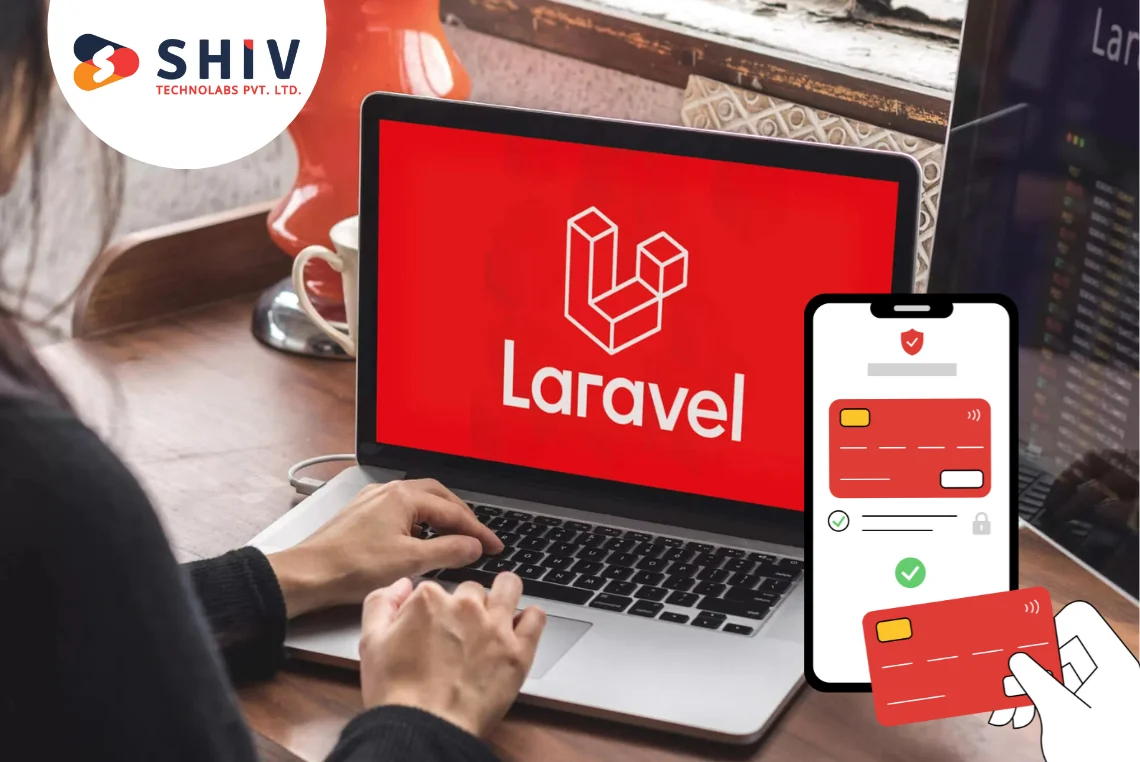Table of Contents
In the world of e-commerce, multi-vendor marketplaces have gained significant traction. Platforms like Amazon and eBay have set the standard, allowing multiple vendors to sell their products under one roof. For businesses looking to create their own multi-vendor marketplace, Laravel is an excellent choice. This article delves into everything you need to know about developing a multi-vendor marketplace using Laravel.
What is a Multivendor Marketplace Website?

A multivendor marketplace website is an eCommerce platform where multiple vendors can register and sell their products. Unlike traditional e-commerce sites run by a single seller, a multivendor marketplace allows various sellers to offer their goods to a broad audience. This model benefits both vendors and customers, providing a wide range of products and competitive prices.
Key features of a multivendor marketplace include:
- Vendor Management: Allowing vendors to create profiles, list products, and manage their inventories.
- Product Listings: Multiple products from various vendors listed in a centralized catalog.
- Order Management: A system to manage orders from different vendors efficiently.
- Payment Gateway Integration: Secure payment processing for transactions.
- Review and Rating System: Enabling customers to rate vendors and products, enhancing trust and reliability.
Why Create a Multivendor Marketplace Platform with Laravel?
Creating a multivendor marketplace platform is a strategic move for businesses aiming to capitalize on the growing trend of online shopping and e-commerce. Laravel, a popular PHP framework, offers a robust and scalable solution for developing such platforms. Here are the detailed reasons why you should consider creating a multivendor marketplace platform with Laravel:
# Robust and Scalable Framework
Laravel is known for its robust architecture and scalability. As your Laravel multi vendor marketplace grows, the framework can handle increased traffic and data load efficiently. Its modular approach allows developers to build applications that are easy to scale, making it an ideal choice for large e-commerce platforms that anticipate a high number of vendors and customers.
# Comprehensive Ecosystem
Laravel comes with a comprehensive ecosystem that includes tools for every aspect of web development. From routing and middleware to authentication and caching, Laravel provides everything you need to build a fully functional multivendor marketplace. The Laravel ecosystem also includes Laravel Nova for administration, Laravel Cashier for handling payments, and Laravel Scout for search functionalities, ensuring that all essential features are covered.
# Efficient Development Process
Laravel’s elegant syntax and powerful features streamline the development process, allowing for faster and more efficient development cycles. The framework’s extensive documentation and active community support mean that developers can quickly find solutions to any challenges they encounter. This efficiency can significantly reduce the time to market for your custom Laravel multi vendor marketplace.
# Advanced Security Features
Security is a top priority for any e-commerce platform. Laravel offers advanced security features out-of-the-box, including protection against SQL injection, cross-site scripting (XSS), and cross-site request forgery (CSRF). Laravel’s authentication system ensures that only authorized users can access specific parts of your application, and its built-in encryption further safeguards sensitive data.
# Superior Performance
Performance is crucial for the success of any eCommerce platform. Laravel’s optimization tools, such as route caching, query optimization, and built-in task scheduling, help maintain high performance even under heavy loads. This ensures that your Laravel multi vendor marketplace remains fast and responsive, providing a seamless user experience.
# Cost-Effective Development
Utilizing Laravel development services can be a cost-effective solution for creating a multivendor marketplace. The open-source nature of Laravel means there are no licensing fees, and the extensive package ecosystem allows for the integration of third-party services without additional costs. This makes it easier to manage the budget while building a feature-rich platform.
# Customization and Flexibility
Laravel provides unmatched customization and flexibility. Whether you need specific features or custom workflows, Laravel allows developers to tailor the platform to meet unique business requirements. This flexibility ensures that your custom Laravel multi vendor marketplace can adapt to evolving market needs and provide a competitive edge.
# Community and Support
Laravel boasts a vibrant community of developers who contribute to its growth and improvement. This active community means continuous updates, a wealth of learning resources, and third-party packages that can enhance your marketplace. Furthermore, Laravel Development services often come with professional support, ensuring that any technical issues can be promptly addressed.
# Seamless Integration
Integrating third-party services and APIs is crucial for modern e-commerce platforms. Laravel’s architecture makes it easy to integrate with various payment gateways, shipping services, and marketing tools. This seamless integration capability ensures that your Laravel multi vendor marketplace can offer comprehensive services to vendors and customers alike.
Laravel Multivendor Development Cost Breakdown

Creating a multivendor marketplace with Laravel involves several components, each contributing to the overall cost. The total cost for developing such a platform can range from $20,000 to $71,000, depending on the complexity of the project, the features required, and the expertise of the development team. This breakdown will help you understand the various expenses involved, providing a clear picture of what to expect.
| Component | Description | Estimated Cost (USD) |
|---|---|---|
| Planning and Research | Initial market research, competitor analysis, and project planning | $1,000 – $3,000 |
| UI/UX Design | Designing the user interface and user experience for both web and mobile platforms | $2,000 – $5,000 |
| Front-End Development | Developing the client-side of the application, including responsive design | $3,000 – $7,000 |
| Back-End Development | Server-side development, including database setup, API development, and integration | $5,000 – $10,000 |
| Vendor Management System | Creating a system for vendor registration, product listing, and inventory management | $3,000 – $6,000 |
| Payment Gateway Integration | Integrating secure payment gateways like PayPal, Stripe, or other preferred services | $2,000 – $4,000 |
| Order Management System | Developing a system to manage orders, track shipments, and handle returns | $3,000 – $6,000 |
| Security Implementation | Implementing security measures, including SSL, encryption, and secure authentication | $1,000 – $3,000 |
| Testing and QA | Conducting thorough testing and quality assurance to ensure bug-free performance | $2,000 – $4,000 |
| Deployment and Hosting | Deploying the application on a hosting server and managing initial hosting costs | $1,000 – $2,000 |
| Maintenance and Support | Ongoing maintenance, updates, and technical support | $500 – $1,500/month |
It’s important to factor in ongoing maintenance and support costs, which can range from $500 to $1,500 per month, depending on the complexity of the marketplace and the level of support needed.
Challenges of Creating a Multivendor Marketplace in Laravel
While Laravel is a robust framework for building web applications, developing a multivendor marketplace comes with its own set of challenges:
- Complex Vendor Management: Managing multiple vendors with different needs and preferences can be complex. Ensuring smooth onboarding, product listing, and order management requires careful planning and execution.
- Scalability Issues: As the number of vendors and customers grows, the platform must handle increased traffic and transactions efficiently. Proper architecture and optimization are crucial.
- Security Concerns: Protecting sensitive data, such as payment information and personal details, is paramount. Implementing secure payment gateways and ensuring data encryption is necessary.
- User Experience: Providing a seamless user experience for both vendors and customers is challenging. The platform must be intuitive, fast, and responsive.
How to Build a Multivendor Marketplace: 4 Phases
Building a multivendor marketplace involves several phases. Here is a step-by-step guide:
# Planning and Research
- Define the business model and target audience.
- Identify key features and functionalities required for the marketplace.
- Conduct competitor analysis to understand market trends and customer expectations.
# Design and Development
- Front-end Development: Create a user-friendly interface for vendors and customers. Ensure responsive design for different devices.
- Back-end Development: Develop robust features for vendor management, product listings, order processing, and payment integration using Laravel.
- Database Design: Structure the database to handle multiple vendors, products, orders, and customer information efficiently.
# Testing and Quality Assurance
- Conduct thorough testing to identify and fix bugs.
- Perform security testing to protect against vulnerabilities.
- Ensure the platform is scalable and can handle high traffic.
# Launch and Maintenance
- Deploy the platform and monitor its performance.
- Gather feedback from vendors and customers to make necessary improvements.
- Regularly update the platform to add new features and enhance security.
How to Attract Vendors to Your Multivendor Marketplace?
Attracting vendors to your platform is crucial for its success. Here are some strategies:
- Competitive Commission Rates: Offer attractive commission rates to vendors, making your platform more appealing than competitors.
- Marketing and Promotion: Invest in marketing campaigns to raise awareness about your marketplace. Use social media, email marketing, and SEO to reach potential vendors.
- Vendor Support: Provide excellent support to help vendors with onboarding, product listing, and order management. A dedicated support team can make a significant difference.
- User-Friendly Interface: Ensure your platform is easy to use for vendors. A simple and intuitive interface can encourage more vendors to join and stay.
- Success Stories: Share success stories and testimonials from existing vendors to build trust and credibility.
Conclusion
Creating a multivendor marketplace using Laravel is a challenging yet rewarding endeavor. By understanding the key features, challenges, and phases of development, you can build a robust and scalable platform. Attracting and retaining vendors is crucial for the success of your marketplace, and providing excellent support and a user-friendly experience can make a significant difference. With careful planning and execution, your Laravel multivendor marketplace can become a thriving business.
Laravel Development services Sauth Africa offer a solid foundation for building custom laravel multi vendor marketplaces, ensuring your platform is equipped with the necessary features and functionalities to succeed in the competitive e-commerce landscape.




















